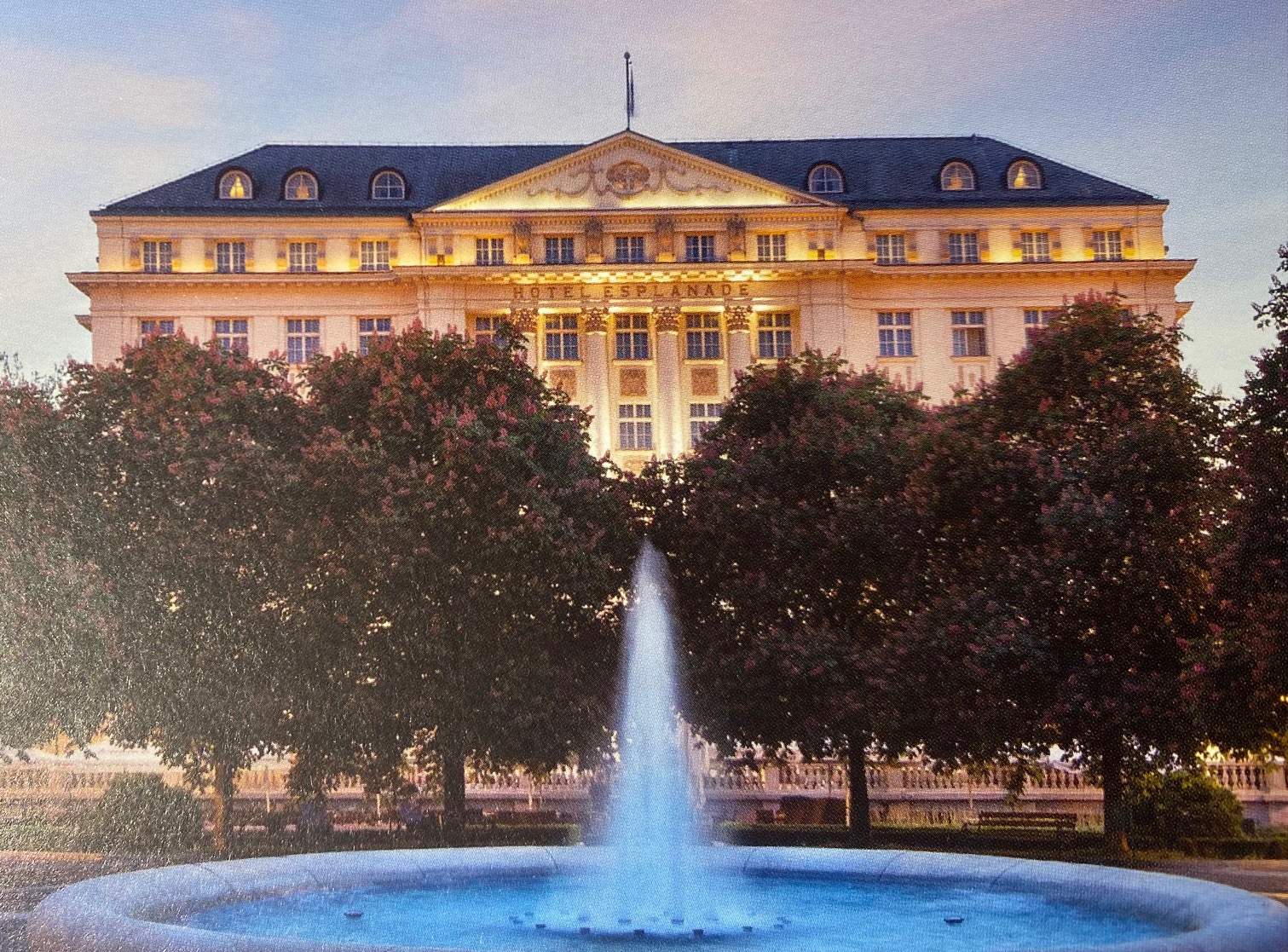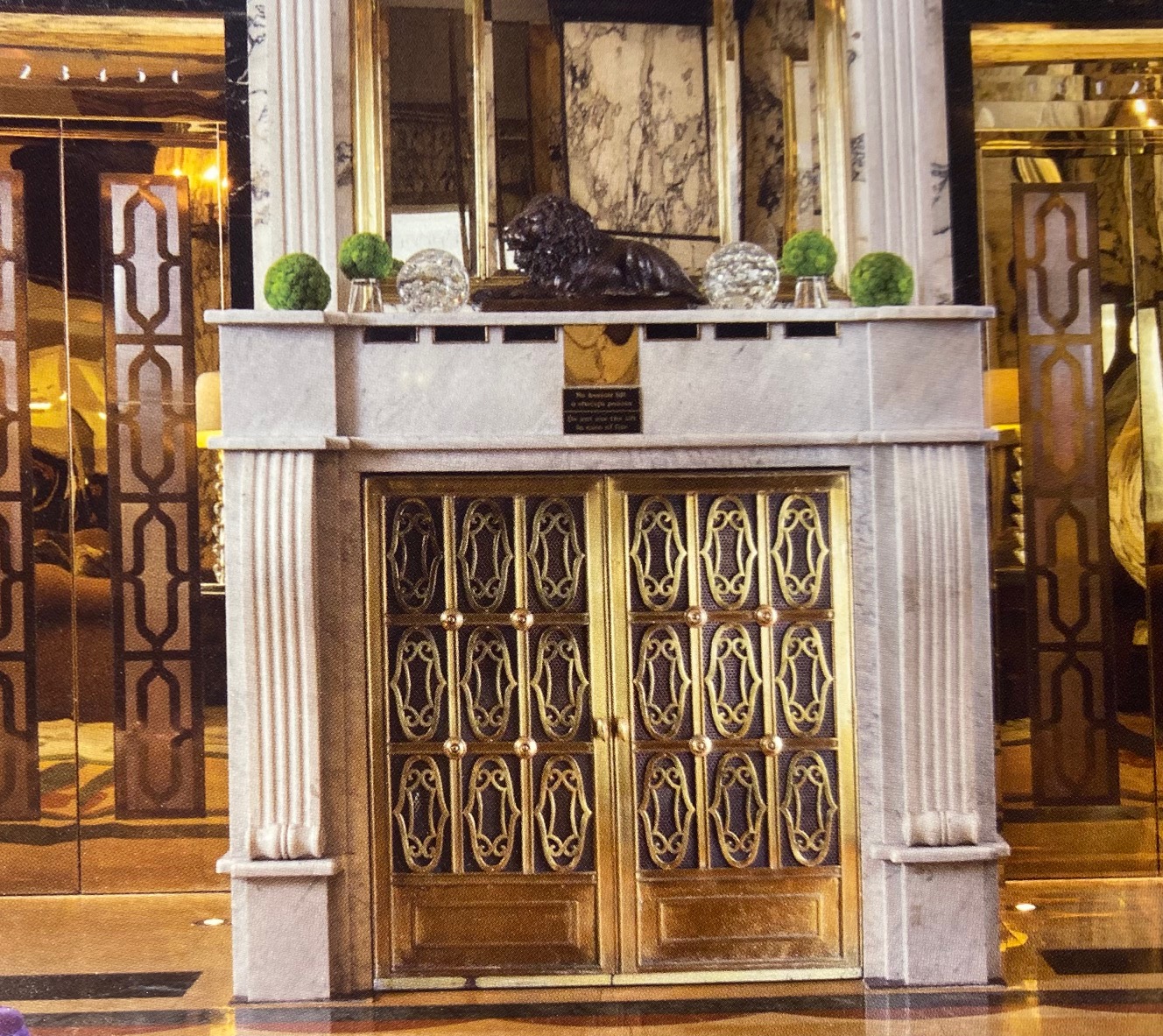Zagabria. Una memoria vivente dell’Orient Express
A Zagabria, un secolo di storia dell'Hotel Esplanade. La fortuna con l'Orient Express, la guerra, adattandosi ai tempi per sopravvivere.

A Zagabria, un secolo di storia dell'Hotel Esplanade. La fortuna con l'Orient Express, la guerra, adattandosi ai tempi per sopravvivere.

English translation below
Zagabria nel 1925 decise di sognare e di far sognare. Venezia arrivava fino a Istanbul, si chiamava Orient Express. La Croazia, già provincia orgogliosa dell’impero austroungarico e colonna economica della nuova Iugoslavia, veniva baciata da questo percorso che univa Europa e Levante. In mezzo, ça va sans dire, la Mitteleuropa e i suoi miti, colpiti dalla prima guerra mondiale ma ancora capaci di battere un colpo.
Il colpo di Zagabria fu la costruzione dell’Esplanade, un palazzo del lusso e del buon gusto, per chi dall’Orient Express volesse scendere sulle rive della Drava, quel fiume che nasce in Italia per arrivare a Zagabria e connetterla al Danubio.

Quel treno magico fu solo uno dei tanti capitoli del fecondo rapporto tra ferrovia e società, e società nel senso di costume, economia, identità, e in questo Zagabria fece sua la lezione di Albert Kimsey ricordata da Heat-Moon:
“La costruzione delle ferrovie è una cura per i problemi sociali e politici della vita moderna. La povertà, la rivoluzione, il brigantaggio, la persecuzione religiosa e i corporativismi sociali scompaiono davanti a questo evento onnipossente. Dove l’esercito e la legge sono impotenti, la locomotiva ha successo.”
L’Orient Express portò in regalo alla Croazia anche qualcosa di più che sicurezza e legalità: portò il glamour, e portò l’Esplanade, quell’albergo, quell’ambiente, che ancora mancava.
Gli investitori fremevano e la costruzione, proprio accanto alla stazione, fu rapidissima: passarono 26 mesi dalla posa della prima pietra all’apertura. Un monumento di quell’epoca, dalla scalinata esterna all’ingresso, dai saloni, ai bagni, ai tendaggi, fino alle posate e a tutto il resto: duecento camere, tutte con telefono privato, tutte con acqua calda, ascensori monumentali, e dell’Esplanade si disse che “l’esperienza di entrarci, è una di quelle che vale la pena di raccontare a i propri nipotini”. Zagabria entrò nel bel mondo e nel nuovo albergo cominciarono ad accadere cose mai viste da quelle parti – come l’arrivo del transvolatore oceanico Lindbergh o, alla festa di un italiano, il primo strip-tease della Croazia.
Un cosmopolitismo di lusso e un’arte del viaggiare che furono spazzato via dalla guerra, quando a viaggiare non furono più le carrozze salotto dell’Orient Express, ma i treni blindati. Perché se un grande albergo fa la storia, è anche la storia a plasmarlo, trovando in quei saloni un teatro dei tempi che cambiano, e l’Esplanade subì una delle sue straordinarie metamorfosi, ospitando il quartier generale della Gestapo e un altro genere di festini.
Finito il conflitto, si cambiò ancora pelle, e in modo drastico: l’albergo si trasformò in grande cucina pubblica per una Zagabria affamata. Nel 1957, il tenore Mario Del Monaco marcò la riapertura dell’albergo e da allora, l’Esplanade tornò a vestire “i suoi panni”, divenendo la zona franca nell’opaca Iugoslavia di Tito per ogni genere di celebrità: Churchill o Krusciov, Pablo Casals o Laurence Olivier, Kissinger o Aldo Moro.

Ma un albergo così ha il destino di rimanere intrecciato ai passi della storia, e negli anni ’90 ancora una volta questi saloni smisero di accogliere personaggi come Silvana Pampanini o Maria Callas, e divennero di fatto il quartier generale dei corrispondenti della guerra dell’ormai ex-Iugoslavia, dei comandi dei caschi blu in Croazia, delle spie e dei trafficanti. Ci volle la fine del comunismo, l’indipendenza della Croazia, e anche l’adesione all’Unione Europea, per far tornare l’Esplanade a registrare nell’elenco dei suoi ospiti persone come Woody Allen o gli U2.
Questo adattarsi ai tempi, questo camaleontismo dell’albergo dei grandi viaggi, ha un suo corrispettivo anche negli aspetti societari: da albergo di stato è divenuto albergo di una grande catena internazionale presente anche nei paesi meno “occidentali” (l’Intercontinental che aveva un suo hotel perfino a Kabul), per poi passare sotto il marchio di alta gamma Regent, e infine tornare a essere una stella solitaria. A fare da filo rosso, il bar “1925”, che si rifà direttamente agli arredi dell’Orient Express. Ed è lì, alle prese con il migliore struckli di Zagabria, il piatto tipico a base di formaggio, che cento anni dopo un viaggiatore può sentirsi in un museo vivente che intreccia alberghi e storia, parte di una lunga catena umana che in questo primo secolo di vita ha qui trovato uno suo sofisticato “posto di tappa”.
ENGLISH VERSION
In Zagreb, a Century of History of Hotel Esplanade
In 1925, Zagreb decided to dream and make the world dreaming. Venice magic connection to Istanbul was a train, the Orient Express. Croatia, once a proud province of the Austro-Hungarian Empire and then economic pillar of the new Yugoslavia, was kissed by this route that united Europe and the Levant. In the middle, it goes without saying, Central Europe and its myths, hit by the First World War but still capable of astonishing.
Zagreb’s surprise was the construction of the Esplanade, a palace of luxury and good taste, for those who wanted to “get off” the Orient Express on the banks of the Drava, which starts in Italy to reach Zagreb and then connecting it to the Danube.
That magic train was just one of the many chapters in the fruitful relationship between railways and society, and society in the sense of customs, economy, identity. Zagreb had learned the lesson of Albert Kimsey, quoted by Heat-Moon: “The construction of railways is a cure for the social and political problems of modern life. Poverty, revolution, banditry, religious persecution and social corporatism disappear before this omnipotent event. Where the army and the law are powerless, the locomotive succeeds.” The Orient Express also brought something more than security and legality to Croatia: it brought glamour, and it brought the Esplanade, that hotel, that atmosphere, which was still missing. Investors were eager and construction, right next to the station, was very quick: only 26 months passed from the laying of the first stone to the opening. A monument of that era, from the external staircase to the entrance, from the lounges, to the bathrooms, to the curtains, to the cutlery and everything else: two hundred rooms, all with private telephones, all with hot water, monumental elevators, and it was said of the Esplanade that “the experience of entering it is one that is worth telling your grandchildren about”. Zagreb entered the high society and in the new hotel things began to happen that had never been seen in those parts – like the arrival of the transatlantic flyer Lindbergh or, at an Italian’s party, the first strip-tease in Croatia.

A luxurious cosmopolitanism and an art of travel that were swept away by the war, when it was no longer the dining cars of the Orient-Express that travelled, but the armoured trains. Because if a great hotel makes history, it is also history that shapes it, finding in those halls a theatre of the “changing times”. The Esplanade underwent one of its extraordinary metamorphoses, hosting the Gestapo headquarters and another kind of party. After the conflict, it changed skin again, and in a drastic way: the hotel was transformed into a large public kitchen for a hungry Zagreb. In 1957, the tenor Mario Del Monaco marked the reopening of the hotel and from then on, the Esplanade returned to “wear its clothes”, becoming the free zone in Tito’s opaque Yugoslavia for all kinds of celebrities: Churchill or Khrushchev, Pablo Casals or Laurence Olivier, Kissinger or Aldo Moro.
But a hotel like this has the destiny of remaining intertwined with the steps of history, and in the 90s once again these halls stopped welcoming people like Silvana Pampanini or Maria Callas, and became the de facto headquarters of the war correspondents of the now ex-Yugoslavia, of the blue helmet commands in Croatia, of spies and traffickers. It took the end of communism, the independence of Croatia, and also the accession to the European Union, for the Esplanade to once again register people like Woody Allen or U2 in the list of its guests.
This adapting to the times, this chameleonism of the hotel of great journeys, has its counterpart also in the corporate aspects: from a state hotel it has become the hotel of a large international chain present also in the less “Western” countries (the Intercontinental, a brand that had its own hotel even in Kabul), then to pass under the high-end brand Regent, and finally to return to being a solitary star. The common thread is the “1925” bar, which is directly inspired by the furnishings of the Orient Express. And it is there, grappling with the best struckli in Zagreb, the typical cheese-based dish, that a hundred years later a traveler can feel like he is in a living museum that intertwines hotels and history, part of a long human chain that in this first century of life has found its sophisticated “stopover” here.
